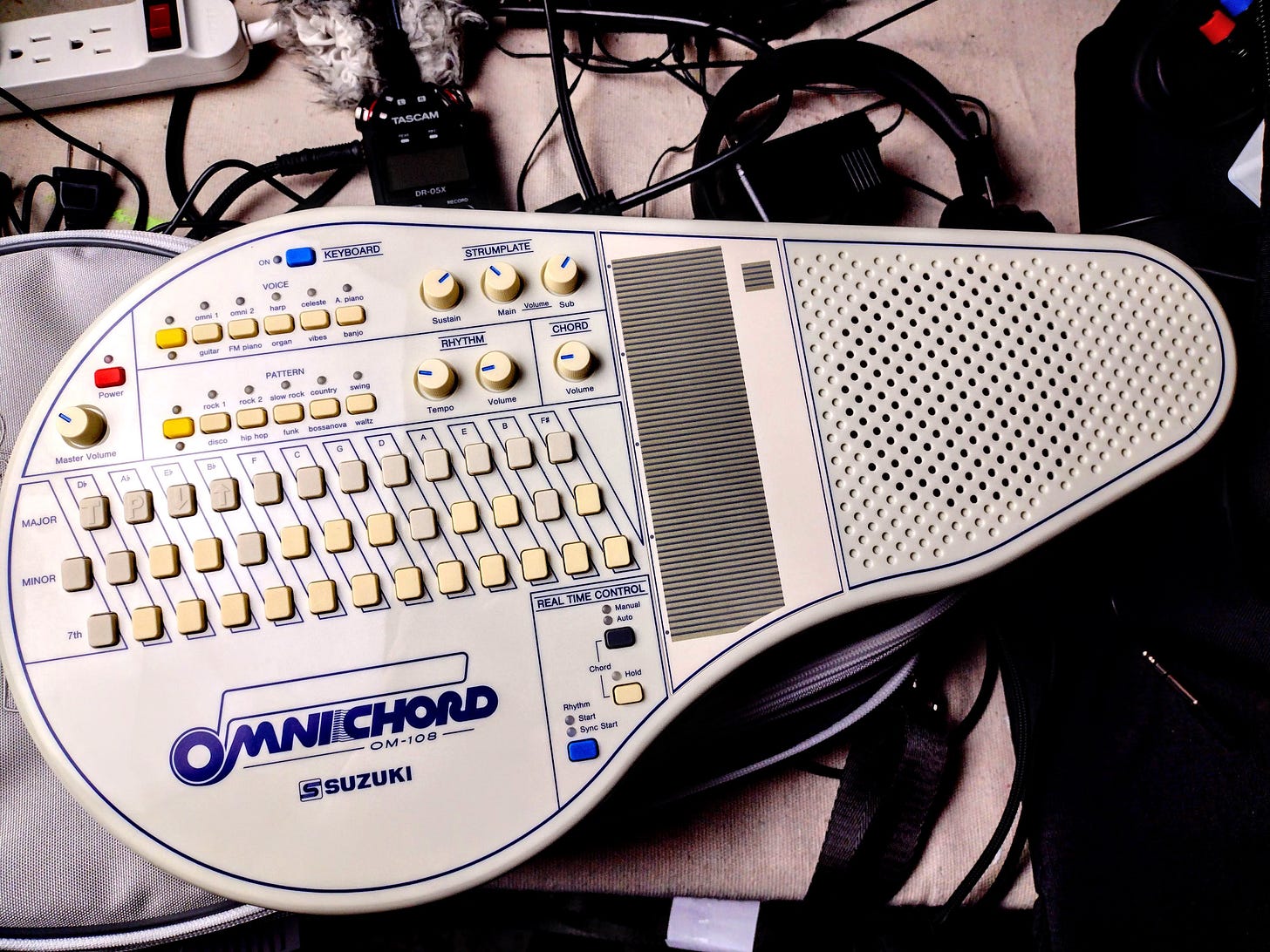Mark Rushton’s Interpolation in the Arts is a weekly email on Substack where I talk about my ongoing work as a recording artist and visual artist.
This email is brought to you by the Mark Rushton Gallery, for printed and original artworks. License my music, sound fx, and illustrations at Pond 5 for your creative project. I’m on Bandcamp and all the usual streaming services.
This week’s topics:
Omnichord OM-108
JJ Cale - “Call Me the Breeze”
JJ Cale - “Durango”
Omnichord OM-108
I bought an Omnichord this week.
It’s like an electronic autoharp that also has a drum machine and chords.
I’ve had my eye on this device for a long time. Suzuki hadn’t made them since the 1990s, so buying one used was always questionable.
Last year, Suzuki came out with a new model, the OM-108. Not cheap, but inflation-adjusted compared to the prices in the 1980s.
The Omnichord checks off all my boxes:
No menus
No software or updates
No subscriptions
No programming
Buttons and knobs
Output for further processing
Earlier Omnichord models have been featured on a few hit records over the decades. “Love is a Stranger” by Eurythmics. “Clint Eastwood” by Gorillaz.
Meshell Ndegeocello had an Omnichord-based album in 2023, The Omnichord Real Book, which won a Grammy as “Best Alternative Jazz Album”, the first year that category was a thing. It’s a pretty good record, but I don’t know what the term “alternative jazz” is meant to signify.
After a short time with the instrument, I can safely say it’s right up my alley. Lots of fun, especially with my processing boxes. Love the retro sounds and drum machine.
I’ll be making lots of sounds with this in the future. It’s a keeper.
JJ Cale - “Call Me the Breeze”
I like how JJ Cale, on his debut album in 1971, Naturally, used a drum machine on some of the early tracks. I guess the story goes he didn’t have money for a drummer. All that “After Midnight” money hadn’t yet rolled in because of Eric Clapton.
Drum machines were not in wide use in 1971, especially in released recordings. I asked the word robots which drum machine Cale used. First, it said a 1967 model Ace Tone FR-1 Rhythm Ace. A second time I asked, the word robot said it was a MRK2.
I have the MRK2 in app format, and that didn’t sound right. Then I found a video of somebody playing their Rhythm Ace, and of course that was it.
Stupid robots... Don’t be trusting anything they say.
I’ve always been interested in the collision of drum machines, mild electronics, and blues/country. I used a blues riff loop on a song on my first album. I’d like to explore it more in the future.
What’s also great about the JJ Cale recording of “Call Me the Breeze”, widely covered by many artists, is how “unslick” it sounds. Even in 1971, this is like a rough mix demo. I suppose, at the time, the Rhythm Ace was like “a metronome with benefits”, but it certainly adds a lot here and has made it a classic.
JJ Cale - “Durango”
From his 1997 album Anyway The Wind Blows - The Anthology, this previously unreleased track is outstanding. I have no idea when it was recorded - maybe late 80s to early 90s? It’s sorta timeless. “Durango” is a trippy “space country groove” instrumental with odd synths, guitars, and likely a Fender Rhodes. I had to throw this in as a bonus because it’s such a favorite of mine. It’s a lot different from “Call Me the Breeze”, but I dig both. You really can’t go wrong with JJ Cale and that Tulsa Sound.





